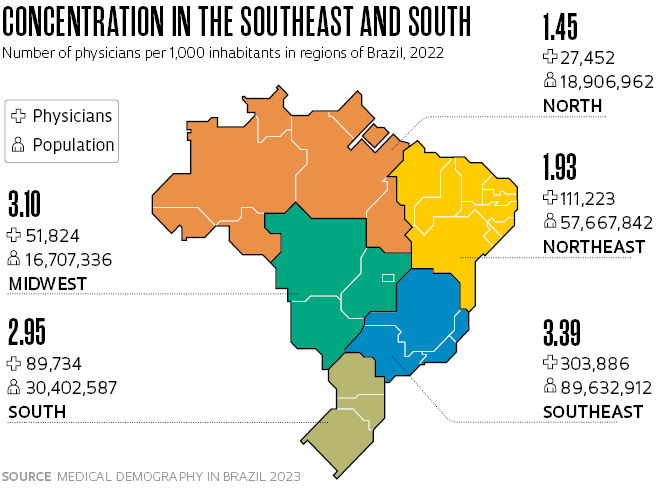Vitória, the state capital of Espírito Santo, has 15 physicians for every 1,000 inhabitants. Macapá, the state capital of Amapá, has just 2 for every 1,000 people. “The inequality is persistent,” said Mário Scheffer of the School of Medicine at the University of São Paulo (FM-USP) when presenting the results of the sixth Medical Demography in Brazil 2023 report on the morning of February 8 at the headquarters of the Brazilian Medical Association (AMB) in the city of São Paulo. There are sharp contrasts. While residents of Southeast Brazil have an average of 3.9 medical appointments per year, residents in the North have 1.86. In January 2023, there were 562,229 doctors working in Brazil, concentrated primarily in state capitals and certain states. Those with the most physicians are the Federal District (5.5 per 1,000 inhabitants), Rio de Janeiro (3.7), and São Paulo (3.5); those with the least are Pará (1.1 physician per 1,000 inhabitants), Maranhão (1.2), and Amazonas (1.3). Scheffer, who led the survey in collaboration with the AMB, highlighted the advance of private medical schools, which currently account for 90% of medical students. “It is the privatization of medical education,” he observed. There is also a growing consolidation of physicians in the private sector, with 28.3% of physicians working exclusively in private healthcare; half (50.2%) working in both the private and public sector, and 21.5% exclusively in public medical centers. Among resident physicians, only 12% are interested in working exclusively or primarily for the Brazilian public health system (SUS). “SUS helps train physicians, but it does not hold onto them after they qualify,” he concluded.
